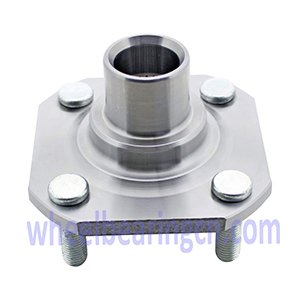Car hubs (also called wheel hubs or hub assemblies) are critical components that connect the wheels to the vehicle’s axle, allowing smooth rotation while supporting the vehicle’s weight. They house the wheel bearings and often include sensors for ABS (anti-lock braking systems).

Key Functions of Car Hubs
- Wheel Attachment – Secures the wheel to the axle.
- Bearing Support – Contains wheel bearings for smooth rotation.
- ABS Integration – Many modern hubs have wheel speed sensors for ABS and traction control.
- Load Bearing – Supports the vehicle’s weight and handles road forces.
Types of Car Hubs
- Standard Hub & Bearing Assembly
- Common in older vehicles; bearings are separate and require manual greasing.
- Hub Unit Bearing (Sealed Hub Assembly)
- Modern design with pre-greased, sealed bearings (common in most cars today).
- Replaced as a single unit when worn out.
- Drive Hub (CV Joint Hub)
- Found in front-wheel/all-wheel-drive vehicles; connects to the CV axle.
Signs of a Bad Wheel Hub
- Grinding/Growling Noise (especially when turning)
- Wheel Vibration or Wobbling
- ABS Warning Light (if the sensor is damaged)
- Uneven Tire Wear
- Steering Wheel Play or Looseness
Replacement & Maintenance
- Cost: $150–$500 per hub (parts + labor).
- DIY? Possible with proper tools, but pressing bearings requires skill.
- Lifespan: Typically 100,000–150,000 miles, but depends on driving conditions.
FAQ
Q: Is a wheel hub the same as a wheel bearing?
A: No—the bearing is inside the hub assembly, but many modern cars use a sealed hub unit.
Q: Can I drive with a bad wheel hub?
A: Not recommended—it can cause wheel detachment or brake failure.
Q: How do I test a bad hub?
A: Lift the wheel and check for play (wiggle test) or spin it to listen for grinding.
Need help identifying a hub issue or choosing a replacement? Let me know your car’s make/model!
